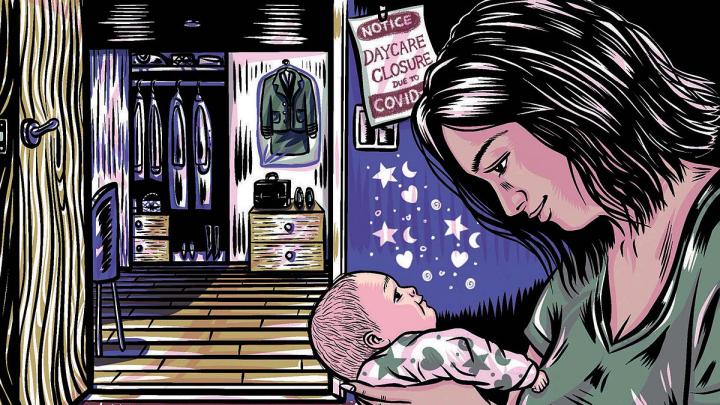When the COVID-19 pandemic triggered global economic turmoil, including the layoffs of millions of U.S. workers, legislators responded in unprecedented ways through the CARES Act of 2020, which dramatically expanded unemployment benefits. “At the beginning of the pandemic, people were super vulnerable,” explains economist Raymond Kluender, assistant professor of business administration at Harvard Business School. “There was a high need to keep people afloat and give them an incentive to stay home and not go to work.” The CARES Act helped states extend the period that laid-off workers could receive unemployment benefits, and also created Federal Pandemic Unemployment Compensation (FPUC), a $600 supplement to unemployment checks. FPUC ended in July 2020 but was renewed in January 2021 at $300 a week.
Yet over time, critics worried: were those generous benefits keeping people out of the workforce and contributing to worker shortages? These concerns led 26 states to end the FPUC unemployment benefits several months before the program was scheduled to expire, in September 2021.
To understand how this aid influenced people’s decisions about returning to work, Kluender and colleagues examined detailed records from the financial tech company Earnin, which gives workers early access to their wages. (Unlike a payday loan company, this “early wage access company” offers the service without charging fees or interest, but encourages users to add an optional “tip” when they repay their loan.) These records were valuable to the researchers because they offer real-time data about people’s transactions. “We can see how much they’re earning, spending, and saving,” Kluender says, “which can add a lot of nuance to traditional research about labor market trends.”
The researchers anonymized the data to protect privacy and zeroed in on 16,000 low-income workers who had limited access to credit and were receiving unemployment insurance in March 2021. “We chose this sample because they were the group most likely to be affected by the policy changes,” Kluender says. Half had their unemployment benefits withdrawn, while the other half were from states where the benefits continued.
Ending expanded unemployment insurance early led to a 7 percentage point increase in “job finding,” relative to states that retained benefits, but this was a smaller improvement than many expected. The analysis found that for every five workers who lost their benefits in June 2021, only one worker found and took a new job by September. More significant were the changes to bank accounts. Unemployed workers in states that ended the benefits early lost $238 of benefits on average and offset those losses with just $39 of earnings. “The workers earned just one additional dollar for every $7 of lost federal unemployment insurance benefits,” Kluender explains. He and his colleagues will share these findings in a paper forthcoming in the American Economic Association Papers & Proceedings.
Their analysis suggests that the generous unemployment benefits did indeed play a role in allowing some people to stay unemployed. “But maybe that wasn’t the driving force behind some of the worker shortages that we’ve seen over the last year or two,” Kluender says. He theorizes that some workers hesitated to return to jobs that raised their risk of infection, and pandemic practices such as masking and social distancing made some service sector jobs—say those that involve standing all day—less appealing. But he suspects that challenges with childcare were an even bigger barrier to getting people back to work.
Families face dilemmas when schools and daycares close intermittently due to COVID. “If you’re working an hourly wage job in which your hours aren’t flexible,” Kluender says, “you can’t work from home, you don’t really have control over your schedule, and if you have a kid at home, it’s really hard to go back to work.” As the pandemic wears on, these problems continue to hit women especially hard, he adds. Kluender also suspects that even meaningful gains in wages as people get back to work “are going to be quickly outpaced by rising inflation.”
The researchers are eager to conduct future studies with the Earnin data, to examine how the expanded unemployment insurance influenced people’s choices. For example, did the extra benefits allow them to be choosier about the job they ultimately took? Kluender and his colleagues are interested in testing if people earned higher pay when they ultimately returned to work.
But the researchers also have broader questions they’d like to address: How might having savings influence workers’ decisions about returning to work? Just how much do the issues of childcare and health affect labor supply? And, Kluender asks, “How can we better design unemployment insurance benefits to better target those who need them most?”









